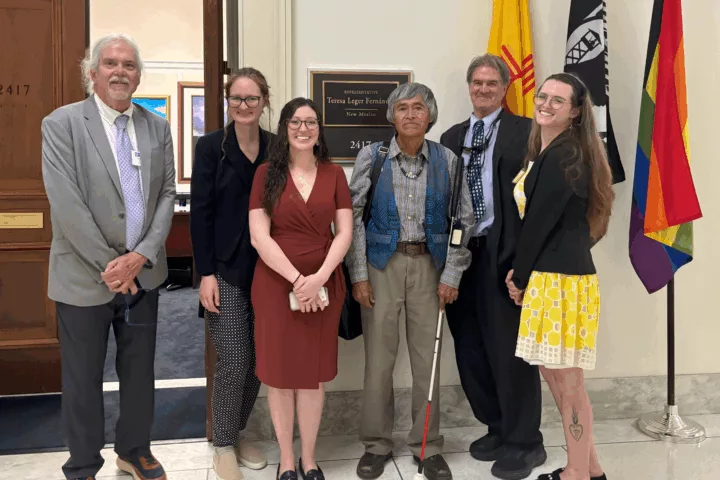House Armed Services Hearing on the B61 Life Extension Program
October 29, 2013
As expected, this was a rah rah session for the B61 Life Extension Program. My opposing comments are mostly in response to the testimonies of witnesses. Their prepared statements are available at
Unless otherwise indicated the quotes herein are from their prepared statements.
Two background notes:
Cost: The estimated weight of individual B61 bombs is ~700 lbs. Gold is currentlly priced at $1,353 per troy ounce. Up to 500 B61s will be refurbished, costing ~$11.8 billion (including DoD tail fin kit). Therefore each bomb will cost more than twice its weight in gold.
The National Nuclear Security Administration (NNSA) proposes a “3+2” strategy for the future stockpile of three ballistic missile warheads and two air-delivered warheads (one gravity bomb and one air-launched cruise missile warhead). All four witnesses claimed the 3+2 strategy will lead to stockpile reductions. However, a comparison of NNSA’s FY 2014 Stockpile Stewardship and Management Plan (in which the 3+2 strategy is first introduced) to previous years’ plans shows no further reductions to the stockpile than what is already incrementally planned. Despite their testimony there is no demonstrable link between 3+2 and stockpile reductions. In fact stockpile size may be bumped up while keeping old warheads as a hedge while seeing how the new warheads work out.
Donald Cook, Deputy Administrator for Defense Programs, National Nuclear Security Administration
Cook touted the virtues of “interoperable” warheads, the first on deck being for the Air Force’s W78 ICBM warhead and the Navy’s sub-launched W88 warhead. However, a recent GAO report has noted that “the Navy has not fully engaged in the effort because (1) other, ongoing modernization programs are higher Navy priorities, and (2) it has concerns about changing the design of the warhead.” [1] This understates the Navy’s concerns, when the service actually seems very skeptical about so-called interoperable warheads. The Navy’s lack of keen endorsement can be enough to kill this concept, especially in combination with inevitably exorbitant costs.
“…let me be clear that the resulting decision supported the lowest cost option that meets threshold military requirements.” With that Cook is pushing back against the Senate Appropriations Committee, which cut $168 million from the Obama Administration’s FY 2014 request of $537 million for the B61 LEP, while stating:
The Committee is concerned that NNSA’s proposed scope of work for extending the life of the B61 bomb is not the lowest cost, lowest risk option that meets military requirements and replaces aging components before they affect weapon performance. [2]
The question of military requirements is key, and whether that may be synonymous with new military capabilities. NNSA and the nuclear weapons labs chose Option 3b for the B61 LEP. As Cook testified, “…Option 3B architecture allows for consolidation of existing B61 variants (B61-3/4/7/10) with the integration of an Air Force provided tail kit assembly.” That tailfin kit will dramatically increase targeting accuracy, functionally melding tactical and strategic variants. The NNSA LEP itself will transform a dumb analogue bomb into a digital nuclear “smart” bomb for delivery by future super stealthy aircraft (the F-35 Joint Strike Fighter). In my view, this combination clearly creates new military capabilities.
Senate Appropriations favors Option 1E, a non-nuclear LEP. The difference in House and Senate funding levels represents a struggle over new military capabilities or not.
Cook stated that sequester cuts made the B61 LEP slip 6 months, so NNSA added $244 million to “management reserve” to offset potential increased costs and risks.
“The B61-12 LEP is making great progress. We are in the second year of full scale engineering development. The program has met its development milestones, it is on schedule and it is on budget.” That is laughable. On budget? Really?
“…cascading effect on the integrated schedule of LEP work….” The likely failure of the B61 LEP will have cascading impact on subsequent LEPs.
“Sustained support for the completion of the B61-12 will enable the retirement of the B83…” Not so, the B83 was already planned for retirement (B83-0s are already being dismantled as per the Pantex Ten-Year Site Plan). The proof is the absence of any proposed LEP for the B83-1 in NNSA’s FY 2014 Stockpile Stewardship and Management Plan.
Right at the end of Q&A Cook made the outrageous statement that to descope the LEP and do anything else would cost more than the LEP itself. He gave no supporting evidence or justification for that.
Madelyn Creedon, Assistant Secretary of Defense for Global Strategic Affairs, Department of Defense
She said 3+2 will save money. Where is the proof? The track record suggests otherwise. Simple maintenance (“curatorship”) is what would save money while not risking reliability through major changes.
General C. Robert Kehler, USAF Commander, US Strategic Command
“Through a series of synchronized life extension programs like the B61-12, we plan to improve confidence in the reliability, safety and intrinsic security of our nuclear weapons.” To the contrary, introducing major changes that can’t be tested to a stockpile that has been extensively tested could be exactly what undermines confidence in reliability.
Paul Hommert, Sandia Labs Director
Bear in mind that Hommert wears two hats: the first as Sandia Labs Director, the second as president of the executive board of the for-profit limited liability corporation that runs Sandia. Sandia Corporation, LLC stands to make a lot of money off of perpetual Life Extension Programs.
“…it is our technical judgment that we must complete the life extension program currently being executed.” Ditto to the above.

